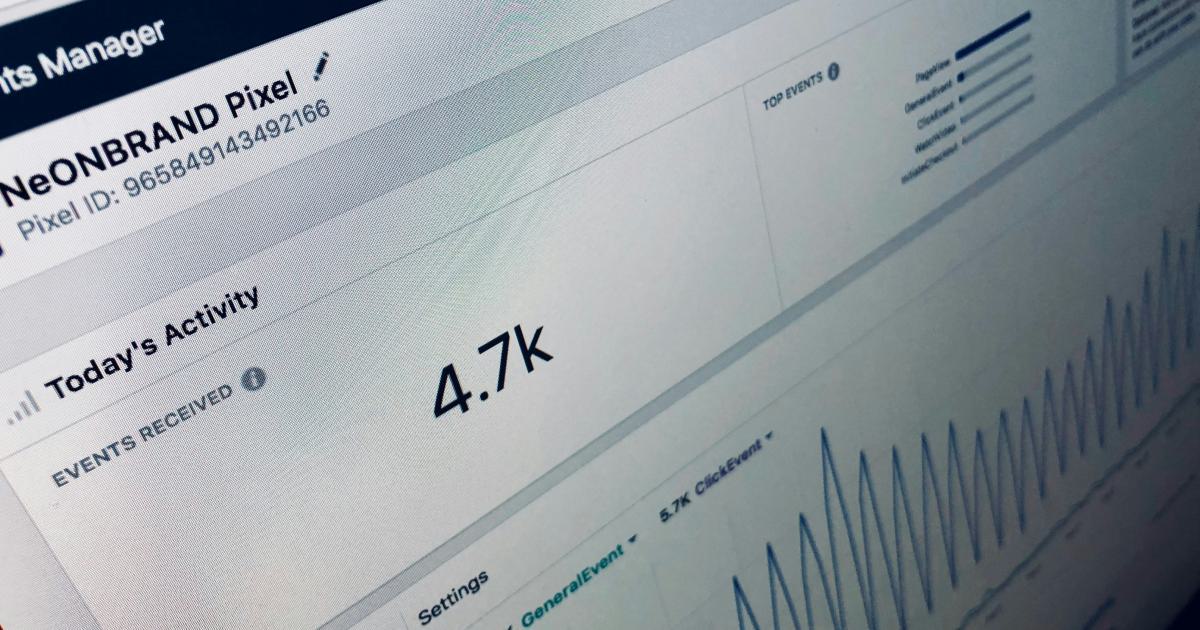8 Powerful Techniques for Better Social Media Integration


Social media has become an integral part of our daily lives, and businesses of all sizes have recognized the immense potential it holds for reaching and engaging with their target audience. However, simply having a presence on social media is not enough - it's crucial to integrate your social media strategy seamlessly into your overall marketing and communication efforts. In this comprehensive article, we'll explore eight powerful techniques that will help you achieve better social media integration and unlock the full benefits of this powerful digital medium.
Understand Your Audience
The foundation of any successful social media integration strategy lies in understanding your target audience. Who are they, what are their interests, and where do they spend most of their time online? Conducting thorough audience research is the first step towards creating content and campaigns that resonate with your followers.
Identify Your Buyer Personas
Begin by defining your buyer personas - detailed profiles of your ideal customers. This includes demographic information such as age, gender, location, and income level, as well as psychographic data like interests, pain points, and behavior patterns. By understanding your audience on a deeper level, you can tailor your social media content and interactions to their specific needs and preferences.

Analyze Social Media Usage Patterns
Next, investigate how your target audience uses social media. Which platforms do they frequent the most? What type of content do they engage with? When are they most active online? This information will help you determine the best channels to focus your efforts on and the optimal times to post your content for maximum visibility and engagement.
Leverage Social Listening Tools
Utilize social listening tools to monitor conversations, trends, and mentions related to your brand, industry, and competitors. This can provide valuable insights into your audience's pain points, interests, and concerns, allowing you to create more relevant and impactful social media content.
Integrate Social Media Across Touchpoints
Effective social media integration goes beyond just having active profiles on various platforms. It involves seamlessly connecting your social media presence with other marketing and communication channels, creating a cohesive brand experience for your customers.
Align Social Media with Your Website
Ensure that your social media profiles and content are closely aligned with your website's branding, messaging, and overall user experience. This includes using consistent visual elements, sharing relevant website content on your social channels, and making it easy for visitors to connect with you on social media.

Incorporate Social Sharing Functionality
Make it easy for your website visitors and email subscribers to share your content on their social media platforms. Implement social sharing buttons and plugins that allow users to quickly and conveniently share your blog posts, product pages, and other valuable content.
Leverage Social Media in Email Campaigns
Integrate your social media presence into your email marketing strategy. Include social media icons, links, and calls-to-action in your email newsletters and promotional campaigns, encouraging your subscribers to follow and engage with you on various social platforms.
Optimize for Mobile Experiences
With the majority of social media usage happening on mobile devices, it's crucial to ensure that your social media content and integrations are optimized for seamless mobile experiences. This includes responsive design, mobile-friendly content formatting, and optimized user interactions.
Create Engaging, Cross-Platform Content
Producing high-quality, engaging content is essential for successful social media integration. Develop a content strategy that leverages the unique strengths and features of each social media platform, creating a cohesive and compelling brand narrative across all your digital touchpoints.
Leverage Platform-Specific Content Formats
Different social media platforms favor distinct content formats, such as Instagram's emphasis on visuals, Twitter's emphasis on concise text, and LinkedIn's focus on thought leadership. Tailor your content to the specific preferences and conventions of each platform, ensuring maximum engagement and reach.

Repurpose and Adapt Content
Maximize the value of your content by repurposing and adapting it for various social media platforms. Turn a long-form blog post into a series of social media updates, extract key insights and quotes to create shareable graphics, or transform a product video into a set of Instagram Reels.
Incorporate User-Generated Content
Encourage your audience to create and share content related to your brand, products, or services. User-generated content (UGC) not only provides fresh, authentic material to share on your social channels but also fosters a sense of community and engagement among your followers.
Leverage Influencer Partnerships
Collaborate with relevant industry influencers, thought leaders, or micro-influencers to create and promote content that resonates with your target audience. Influencer partnerships can help you reach new audiences, enhance your credibility, and drive higher engagement on your social media platforms.
Optimize Your Social Media Presence
Continuously monitor and refine your social media presence to ensure optimal performance and alignment with your overall marketing and business objectives.
Analyze Social Media Analytics
Regularly review your social media analytics to track key metrics such as follower growth, engagement rates, reach, and conversion rates. Use these insights to identify which content and strategies are resonating with your audience and make data-driven decisions to improve your social media integration efforts.

Experiment with Paid Advertising
Supplement your organic social media presence with targeted paid advertising campaigns on platforms like Facebook, Instagram, and LinkedIn. Leverage audience targeting, retargeting, and advanced analytics to reach new potential customers and drive specific business outcomes, such as increased website traffic, lead generation, or product sales.
Optimize for Search Engine Visibility
Ensure that your social media profiles and content are optimized for search engine discoverability. This includes using relevant keywords, filling out complete profile information, and creating content that aligns with your target audience's search intent.
Automate and Streamline Processes
Leverage social media management tools and automation to streamline your day-to-day social media activities, such as scheduling posts, monitoring conversations, and responding to inquiries. This will help you increase efficiency, maintain a consistent brand presence, and free up time to focus on more strategic aspects of your social media integration efforts.
Foster Meaningful Connections
Social media is not just a broadcasting platform - it's a two-way communication channel that allows you to build genuine relationships with your audience. Focusing on fostering meaningful connections can significantly enhance your social media integration and overall brand engagement.
Engage in Authentic Conversations
Actively participate in discussions, respond to comments, and address customer inquiries and concerns in a timely and personalized manner. This demonstrates your commitment to your audience and helps to establish your brand as approachable, responsive, and customer-centric.

Implement Conversational Content
Create content that encourages and facilitates dialogue, such as polls, surveys, and Q&A sessions. These interactive formats not only increase engagement but also provide valuable insights into your audience's preferences, pain points, and interests.
Leverage User-Generated Content
Amplify and celebrate your audience's contributions by regularly sharing and highlighting user-generated content on your social media channels. This reinforces the sense of community, builds trust, and showcases the genuine enthusiasm and loyalty of your followers.
Personalize Your Interactions
Tailor your social media interactions to individual followers whenever possible, addressing them by name, acknowledging their specific interests or concerns, and providing personalized recommendations or solutions. This level of personalization can help to deepen your relationships and foster a more loyal customer base.
Integrate Social Media into Employee Advocacy
Empower your employees to become active brand ambassadors on social media, leveraging their personal networks and authentic voices to amplify your marketing efforts and foster stronger connections with your target audience.
Develop a Social Media Advocacy Program
Implement a structured employee advocacy program that provides clear guidelines, training, and incentives for employees to engage on social media on behalf of your brand. This can include sharing company updates, promoting content, and participating in industry discussions.

Empower Employees with Social Media Tools
Equip your employees with the necessary tools and resources to effectively manage their social media activities, such as social media scheduling and analytics platforms, content libraries, and guidelines for brand representation.
Foster a Culture of Social Media Engagement
Cultivate a company culture that encourages and celebrates employee social media participation. Recognize and reward those who actively contribute to your brand's online presence, and provide ongoing training and support to help employees become more confident and effective social media advocates.
Leverage Employee Networks and Expertise
Encourage your employees to leverage their personal networks and professional expertise to create and share valuable content on their social media channels. This can help to expand your brand's reach, enhance your credibility, and foster deeper connections with your target audience.
Measure and Optimize Performance
Continuous monitoring and optimization are crucial for ensuring the long-term success of your social media integration efforts. Implement robust measurement and analysis practices to track key performance indicators and make data-driven decisions to improve your strategies.
Define Meaningful KPIs
Identify the most relevant key performance indicators (KPIs) that align with your overall business and marketing objectives. These may include metrics such as follower growth, engagement rates, lead generation, website traffic, and conversions.

Conduct Competitive Benchmarking
Regularly assess your social media performance in the context of your industry peers and competitors. This will help you identify areas for improvement, uncover new opportunities, and ensure that your social media integration strategies remain competitive and effective.
Iterate and Optimize Continuously
Use the insights gained from your performance analysis to continuously refine and optimize your social media integration strategies. This may involve adjusting content formats, experimenting with new tactics, reallocating resources, or exploring new platforms or partnerships.
Integrate Social Media Metrics into Reporting
Ensure that your social media performance metrics are integrated into your overall marketing and business reporting. This will help to demonstrate the tangible impact of your social media integration efforts and secure buy-in from key stakeholders.
Leverage Emerging Social Media Trends
Stay ahead of the curve by actively monitoring and adapting to the latest social media trends and innovations. By embracing new technologies, features, and best practices, you can continually enhance your social media integration and maintain a competitive edge.
Explore Emerging Social Media Platforms
Keep an eye out for the emergence of new social media platforms and evaluate their potential to reach and engage your target audience. Be prepared to experiment and adapt your strategies to capitalize on these new opportunities.

Incorporate Immersive Content Formats
Leverage innovative content formats like augmented reality (AR), virtual reality (VR), and 360-degree video to create immersive, engaging experiences for your audience on social media.
Utilize Artificial Intelligence and Automation
Harness the power of artificial intelligence (AI) and automation to streamline your social media processes, personalize your content and interactions, and gain deeper insights into your audience and performance.
Stay Agile and Adaptable
Maintain an agile and adaptable mindset, continuously monitoring industry trends, testing new ideas, and being willing to pivot your social media integration strategies as needed to stay ahead of the curve.